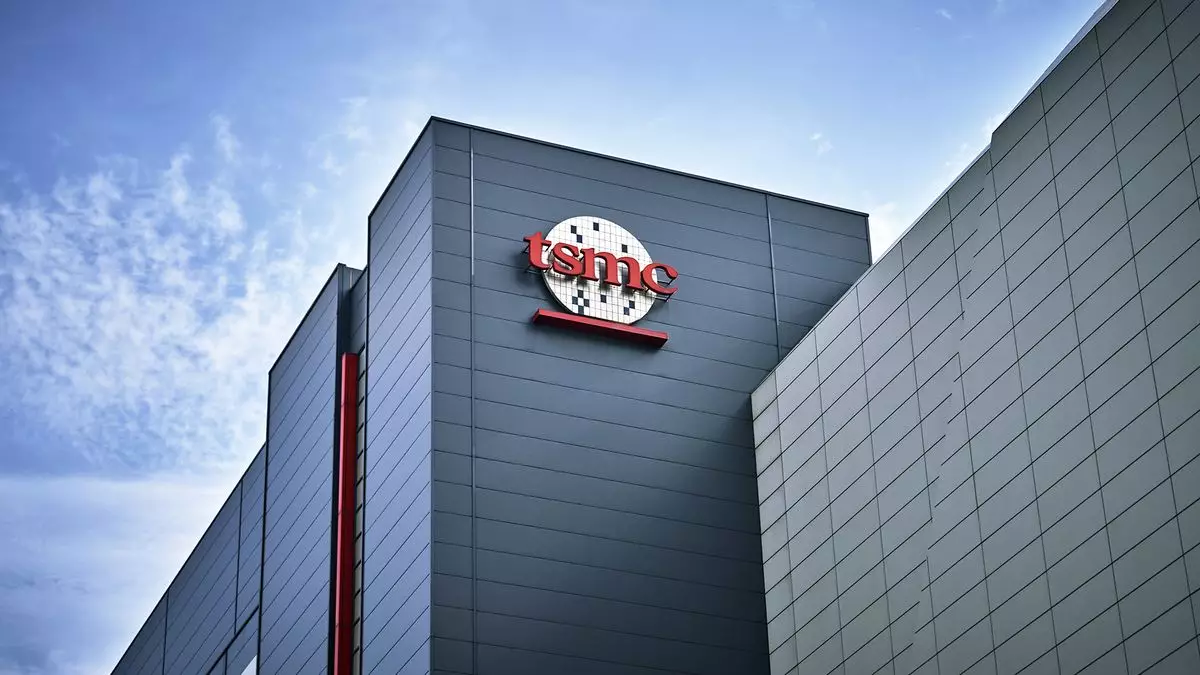In the intricate realm of global trade, compliance is not merely a bureaucratic formality; it is a linchpin for operational sustainability. Taiwan Semiconductor Manufacturing Company (TSMC), the unrivaled leader in semiconductor fabrication, now finds itself navigating a treacherous legal landscape potentially costing it over $1 billion. This revelation, reported by Reuters, stems from an investigation by the U.S. Department of Commerce concerning whether TSMC has inadvertently breached export regulations pertaining to the tech behemoth, Huawei.
While $1 billion may not sink the ship for TSMC—whose financial health remains robust—it poses a critical question regarding corporate governance and risk management within the semiconductor industry. The stakes amplified when TSMC came under scrutiny for allegedly supplying chips that ultimately reach Huawei, a company already under severe export restrictions by the U.S. government.
Tracing the Roots of the Allegations
At the core of this debacle is the famed Ascend 910B AI processor manufactured by Huawei, which reportedly contains a chip produced by TSMC. The implications of this are profound; such allegations are not merely about the financial repercussions, but they resonate deeply within the geopolitical tensions between China and the United States. Following the initial investigation, Sophgo, a computing design company speculated to act as an intermediary, found its name ominously placed on the U.S. government’s Entity List, a designation that prohibits U.S. companies from exporting to it without explicit licenses.
TSMC’s own Nina Kao claimed that the company had ceased all dealings with Huawei following the tech giant’s designation in 2020. This development raises the critical question of whether TSMC’s supposed violations were actually unwitting breaches of complex compliance regulations rather than deliberate circumventions. If found culpable, TSMC’s predicament could serve as a cautionary tale for companies operating within heavily regulated industries.
The Weight of Financial Penalties
The potential financial blow is derived from stringent export control regulations that allow fines up to twice the value of any transactions known to violate these rules. Should the allegations against TSMC be substantiated, the resulting financial liability could indeed exceed the initial estimates, leading to broader implications for the semiconductor industry. In an age where tech companies vie for supremacy, fiscal missteps stemming from legal challenges can lead to cascading effects, overshadowing years of innovation.
However, it’s worth noting that the proposed billion-dollar fine may materialize not as an instantaneous settlement but through a formal “charging letter,” granting TSMC the opportunity to respond. Hence, while the timing of this drama unfolds, the immediate future remains uncertain for both TSMC and its stakeholders.
The Political Dimension of the Inquiry
As the U.S. and China continue to engage in an escalating trade war, TSMC finds itself exposed to substantial political risks that go beyond mere compliance failures. The geopolitical dynamics undoubtedly play a role in how this situation is interpreted, scrutinized, and penalized. While TSMC has recently committed to significant investments in U.S. production capabilities—amounting to a staggering $100 billion—their operations remain burdened by international scrutiny that reflects a broader strategic maneuvering in global markets.
The commentary surrounding TSMC’s predicament further illuminates the challenges faced by global technology firms. TSMC is essential for a multitude of technology and consumer electronic companies reliant on its semiconductor production capabilities. Thus, sanctions or restrictions placed on TSMC by the U.S. could reverberate through the supply chain, affecting smaller players and end consumers alike.
With the potential for TSMC to face intense scrutiny in both legal and market contexts, the unfolding situation serves as a reminder that businesses in highly regulated sectors must remain vigilant not just about compliance, but also about the broader socio-political implications of their operations. As the semiconductor giant braces for what could involve complex negotiations and public discourse, the unfolding narrative presents a microcosm of the intricate dance between commerce and governance, producing a potent mix of economic challenges and opportunities in the ever-evolving technology landscape.

